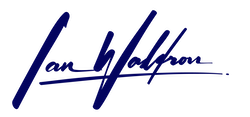Use Case
It's entertaining to see an interest rate on a high-yield savings account that's many times the yield on their checking counterpart. However, it's important to keep in mind that for many, these accounts are likely insufficient in their return structure to be a central component to an investment strategy. Rather, I view high-yield savings accounts just how I would any checking account: a component of my liquidity to accomplish shorter-term objectives. If checking accounts ever catch up to high-yield savings, I would be indifferent between the two.
I use high-yield savings accounts in three primary functions:
- Defensive Savings
- Spending Management
- Investment Allocation
Another situation where a high-yield savings account may be useful could be in transitioning between investments. For example, let's say you're exiting one investment and anticipate downtime until funds are re-deployed to another investment. A high-yield savings account may be a good option to ensure your funds aren't sitting idle. I tend not to use these accounts for this purpose given my investment is primarily in real estate. Therefore, when I exit an investment, I generally am required to park funds with an accommodator until a suitable replacement is found for a successful 1031 exchange. If I were exiting cash and not exchanging property, I would consider a high-yield savings account for this purpose. The last thing to keep in mind is FDIC insurance limits. If your allocation is greater than FDIC limits, short-term treasuries will likely be a better approach.
Let's dive into the three areas I've found high-yield accounts to be most useful.
Defensive Savings
What I consider defensive savings may be commonly referred to as your emergency fund. Every month, I contribute funds for this purpose. Following a common rule of thumb, I aim to maintain a minimum of three-month's expenses in this account. I'm self-employed with much of my income coming from the partnerships, so in practice I keep a bit more available in cash due to uncertainty and variability around my income. Should my businesses encounter an unanticipated setback, distributions may be delayed or otherwise interrupted. Consider the predictability of your income when determining how much cash to keep on hand for emergencies.
I deviate a bit from a one-part solution in saving for emergencies. I maintain an investment account where I make contributions concurrently with my high-yield account. The funds are allocated conservatively into low variance index funds. I do this because in my circumstances, I may have to rely on my defensive cash for extended periods of time as opposed to the common use case of needing funds to keep you afloat between jobs. When I'm affected by a disruption in income, I utilize funds from in order of liquidity. First I access the savings accounts, then the invested funds.
Using a two-part strategy allows for the management of longer-term disruptions without having to access other forms of stored value, such as my speculative investments. The savings account is accessed immediately allowing time for the orderly liquidation of defensive cash allocated to index funds (hopefully). It's important to keep in mind that if you need cash, this may speak to broader economic problems and the value of the investment securities may be affected. This is why I use my savings accounts as my first line of defense.
The proportionate share of defense funds I allocate between my defensive high-yield savings account and my defensive investment account depends on how well-funded the former is. If the savings account has not yet attained a minimum of three-months expenses, I allocate exclusively to this account until that threshold is met. If I need to access the savings account and draw down, I prioritize repopulating this account before resuming allocations to the investment account. Once my target is met, I'll allocate a large portion to the investment account. But I never allocate all funds to this account because I still want the savings account to grow fast enough to keep up with my growth in expenses due to lifestyle inflation as well as true macro inflation.
Lastly, I keep my defensive accounts with a different institution than my spending accounts. I don't want to even see the funds I've allocated for managing emergencies next to my spending accounts. That way, I avoid any temptation to dip into these funds to fund a discretionary expenditure.
Spending Management
I use high-yield savings accounts in managing my spending to accomplish two things: break up large, infrequent purchases over time and to help maintain budget objectives. Collectively, my objective is to smooth my spending. Rather than have my checking account bounce around month-to-month, I want to see even and predictable movements of cash. This will give me better, more actionable information of my financial health and progress towards savings and investment objectives.
These are the accounts I currently maintain for managing my spending:
- Major Purchases
- Travel
- Clothing
- Vehicle Replacement
- Car Insurance, Registration, Tires
- Home Policy
- Housing Expenses
- Property Tax
Major Purchases
This is a generic account I use to keep a stash for when a high-cost item may catch my eye, but I don't want to wait to build up a fund specifically allocated to a purchase you have in mind. I anticipate there will come a time when I want to buy something expensive and don't want to wait. But at the same time, I don't want to put a dent in my checking account. This account covers these circumstances. If you have something in mind and you don't mind waiting, open an account named after that objective and dedicated to that objective. For the unmarried guys out there, who perhaps would like to be married someday whether dating or not, engagement rings are expensive. This would be a good named allocation to build through time so you're ready when the right partner comes along. Your fiancé may not be impressed if you're forced to borrow to buy her a nice ring.
Travel
Traveling these days is expensive. I allocate through time, so the funds are there when the urge to get out of town arrives. I also use this account to tell me when it's time to travel. We can become consumed by our day-to-day and keep our heads down at work. When I see this account begin to accumulate, I know it's time to be thinking about my next destination. I use the balance of this account to help indicate when a reprieve is needed and maintain a healthier work-life balance.
Clothing
Of all my accounts, this one is on the fringe of being necessary. Clothing isn't necessarily a high-cost item relative to my income and can be worked into normal monthly spend. If you lack self-control, this may be a good option to allow the balance of the account to tell you when to spend. I use this account exclusively for maintaining budget objectives rather than minimizing the financial impact on my cash. Especially since clothing purchases tend to be infrequent, it may be difficult remembering where you're at with your clothing budget. Spend only what’s accumulated.
Vehicle Replacement
I like to replace my vehicles every 3-5 years. This is admittedly costly, but the anxiety of vehicles breaking down on the side of the road or having to deal with repairs isn't for me. So, I make sure the funds are present to replace my vehicle when the time comes. Like the former accounts, this one keeps me on budget when I walk into the dealership. Now I have a defined financial constraint in place, and I can worry less about my emotions hijacking rational decision making when selecting a new car. If you like to hold on to your cars, maybe this account is a repairs allowance providing security to handle an unexpected breakdown.
Car Insurance, Registration, Tires
The amount I find myself paying in this category is material but also infrequent. Especially if you live in a high-cost state like California, your insurance and registration can be substantial. There's no avoiding these charges so I'd rather know the funds are there when needed.
Home Policy
Just like your auto policy, make sure the funds are there to pay for your homeowner’s insurance. I also purchase an umbrella policy, which I cannot emphasize enough how important having a general liability policy is in addition to your homeowner’s/renter’s insurance and car insurance policies. These two policies combined can be material. I settle those costs from this allocated account.
Housing Expenses
Housing expenses could mean budgeting for an unexpected repair, a planned improvement, or maybe a down payment on your next house. Either way, making sure you're funded to meet your housing needs is important to your family's security and well-being.
Property Tax
The last of the spending accounts I maintain is property tax. This account is self-explanatory, like many of the above are. Property tax is a large, infrequent expense that homeowners need to make. Don't put this on a credit card. This account is generally the largest of all my spending accounts. In high-cost areas like California, we're spending thousands if not tens of thousands annually on property tax.
Investment Allocation
The final theme I use high-yield savings accounts with is investment allocation. Every month, I measure my surplus cash (my inflows less my outflows) and I move a portion of any increases in cash to my investment allocations. I use this account for larger, one-time investments like real estate purchases not contributions to securities investments. Those I generally make a set monthly transfer to fund. For my real estate investments or other private equity investments, I'll likely need a large sum for a down payment. Each month this account grows from these allocations. When I reach my target threshold, I look to deploy the capital, market conditions permitting. In the meantime, I'm capturing compounding interest giving a boost to my investment objectives.
What About Interest
Some accounts I allow interest to accrue, for others I transfer out the interest. For reserve accounts or investment allocation accounts, I allow the interest to compound and grow the balance. For spending accounts, growth is not an objective. Therefore, I transfer the accumulated interest each month over to an account where growth is the objective. Personally, I use my investment allocations as the destination for transferring interest from my spending accounts. Though I would consider a reserve account to be an equally valid destination.
Final Thoughts
I've shared my approach to utilizing high-yield savings accounts to managing my financial security, budgets, and investment objectives. This is what I've found to work for my specific objectives and constraints. Yours may, and likely will be different. Tailor your approach to your given circumstances. And perhaps most importantly, set up a system you'll stick to. If you find a certain approach requires too much maintenance relative to how much time you're interested in spending, then you have a problem. Consistency is key.

